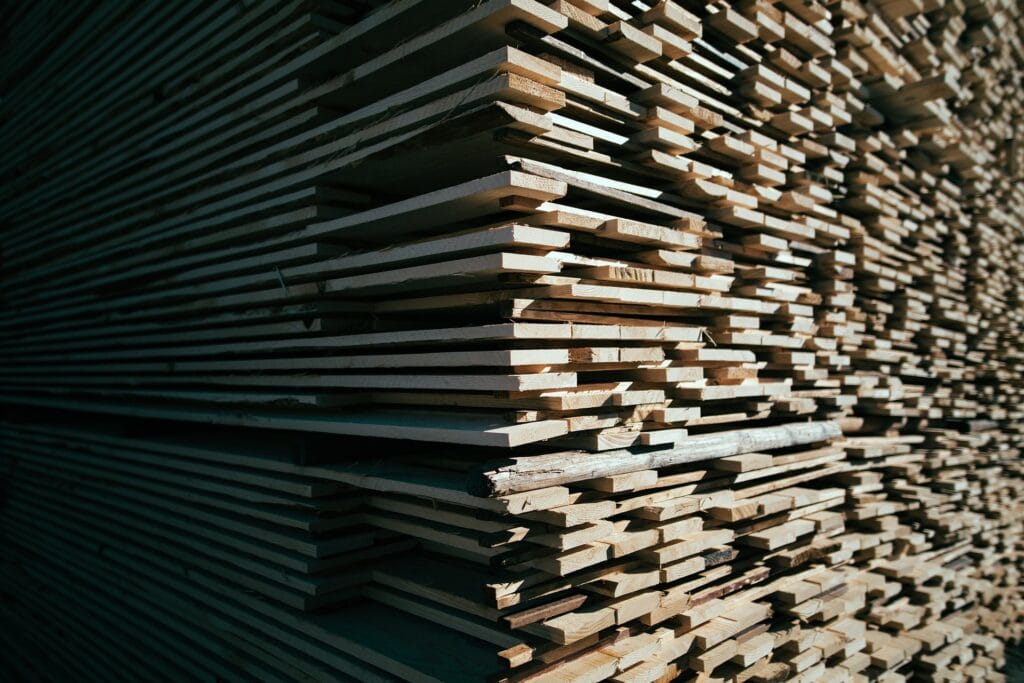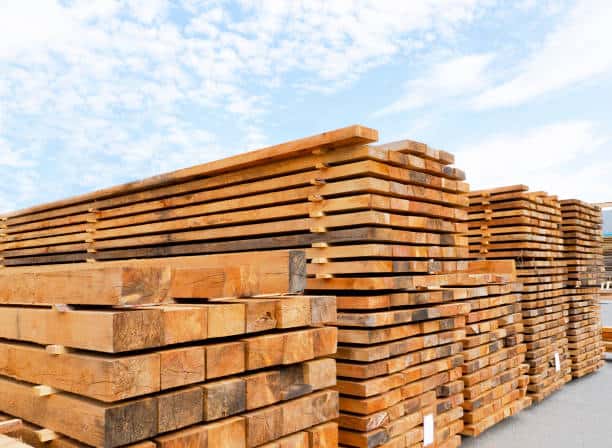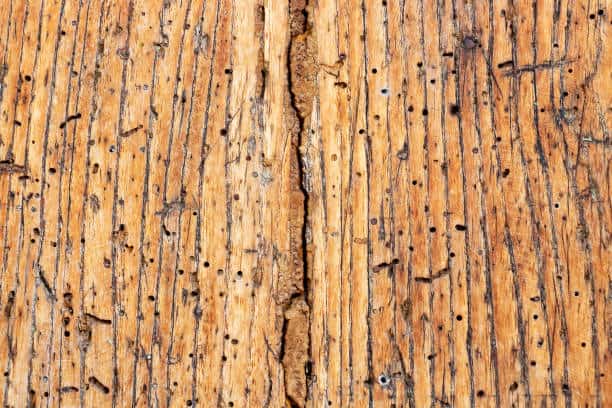
Ah yes, pine lumber is the versatile wood that can be used for anything from building a treehouse to crafting custom furniture. If you’re a woodworking enthusiast like me, you know that proper lumber storage will make all the difference in the quality and durability of any project. This article will hop right into the best practices for storing pine lumber, drawing from my experiences and insights.
So, what are the best practices for storing pine lumber? Simply put, storing pine lumber will include stacking, aeration through elevating and stickers, proper protection through coverings, and appropriate treatments.
But first, let’s understand a little bit about pine lumber.
Before we get into the nitty-gritty of storage, it’s essential to understand your wood. Pine lumber is known for its light color, straight grain, and easy workability. However, it’s also prone to warping and shrinking when not stored correctly. Knowing your wood helps you anticipate its needs.
Pine wood is incredibly versatile and is used in a wide range of projects. I’ve built hundreds and hundreds of projects using pine lumber, both for my personal use as well as commercial use. From cabinets to paneling, from framing to trim, pine lumber can do it all.
The storage of pine lumber can be affected by several factors, including temperature, humidity, and exposure to sunlight. If you’ve ever left a piece of pine wood out in the sun, you’ve probably noticed how it can become brittle and discolored. But don’t worry; we’ll cover all of that in detail!
Ideal Storage Conditions and Moisture Management
- Temperature and humidity control is something that is important to keep in mind when storing pine lumber. In my fifty-plus years of working with pine and many other species of wood, I’ve learned a few important things here and there. One of those things is when storing pine lumber; it should be stored in an environment where the temperature and humidity are stable to help avoid warpage.
- Ventilation and Air Circulation are critical for preventing moisture buildup. I’ve found that stacking lumber too tightly or placing it against a wall can hinder airflow, leading to mold or decay. Leave some space between your boards, and consider using lumber racks for improved circulation.
- Protection from Sunlight and Weather when storing pine lumber is crucial, as sunlight can be pine lumber’s worst enemy. To avoid discoloration and weakening of the wood, store it in a shaded area or cover it with tarps. If you’re keeping lumber outdoors, invest in weather-resistant coverings.
- Preventing Excessive Moisture Excess moisture can wreak havoc on pine lumber. I once stored some pine boards in a damp basement, and the result was a breeding ground for mold and rot. To prevent this, use dehumidifiers in enclosed storage areas and elevate lumber off the ground to avoid moisture absorption.
- Importance of Flat and Level Storage Surface I once stored some pine planks on uneven ground in my backyard. When I retrieved them, they had adopted the undulating shape of the terrain! Ensure your storage surface is flat and level to prevent warping. Using stickers (thin pieces of wood placed between boards) can help maintain flatness.
- Avoiding Rapid Moisture Changes Sudden moisture changes can cause warping and splitting. If you’re bringing pine lumber indoors to acclimate, do it gradually over several days. That way, the wood will have a chance to adjust to the new environment without shocking it.
TIP: If you’re working with green (freshly cut) pine lumber, be prepared for more significant drying and potential movement. Store green lumber with extra care and patience.
Stack and Pile Arrangement When Storing Pine Lumber
When storing pine lumber, ensure the boards are neatly stacked, aligned, and evenly distributed. Avoid stacking them too high, which can lead to instability and potential accidents. If you’re working alone like I usually do, having multiple shorter stacks is better than one towering pile.
Use stickers, which are thin strips of wood, 3/4″ to 1.5″ thick. These thin strips of wood act as spacers, allowing air to circulate and prevent warping.
Warped and twisted lumber can be a real headache, so take precautions. One trick I’ve learned, if it’s possible in your situation, is to alternate the direction of the boards in each layer when stacking. This can help balance the forces that cause warping.
Creating stable lumber piles starts with a solid and level foundation. You don’t want your carefully stacked lumber to topple over when you reach for that bottom board. Make sure the stacks are secure and won’t shift easily.
Pro Tip: Label your stacks! In the future, you will thank yourself when you’re not frantically searching for that perfect length of pine.

Protection from Pests and Decay
Pests can be a menace, and to prevent this, regularly inspect your wood for signs of those little critters and treat them with appropriate pesticides if needed.
Fungal decay can be another issue. Store your pine lumber in a dry and well-ventilated area to reduce the risk of fungi taking hold. Applying a wood preservative can also help protect against decay.

Covering and Wrapping
Covering your lumber with tarps or plastic sheeting can help shield it from rain and sunlight. I’ve found that using bungee cords or straps to secure the coverings in place is quite effective.
End-capping involves covering the ends of your lumber stacks to prevent moisture ingress. I’ve seen a noticeable improvement in the condition of my stored wood when using this technique.
Choose covering materials that are durable and weather-resistant. Investing in quality tarps or UV-resistant plastic sheeting is wise for long-term lumber storage.
TIP: Before using your stored lumber in a project, give it a few days to acclimate to the environment where it will be used. This will help prevent unexpected warping or shrinking after installation.
Some Safety Considerations
These are not directly connected to storing pine lumber but are just as crucial as any lumber you might be storing.
Safety should always be a priority. When handling heavy lumber, use proper lifting techniques to prevent injury. A sore back is no joke!
Keep your storage area clear of flammable materials and install fire extinguishers. Wood is highly combustible; you wouldn’t want your lumber to become fuel if a fire broke out.
Wearing appropriate PPE, such as safety glasses and gloves, is crucial when working with pine lumber. Splinters and dust can be pretty unforgiving.
Additional Questions and Information
Horizontally or vertically, which is the best way to store lumber? Both the vertical and horizontal positions have advantages and disadvantages, as shown in the table below. It has been said that vertical storage of pine lumber is best for well-dried boards with less risk of wrapping. Horizontal storage with stickers is suitable for wet or green lumber that’s been freshly milled.
| Vertically | Horizontally |
| Space-Efficient: Saves floor space, which is beneficial in smaller areas. | Even Support: Horizontal storage provides even support along the length of the boards, reducing the risk of warping or bending. |
| Risk of Warping: If not adequately supported, boards can bow or warp over time. | Space Requirement: Requires more floor space, which might not be ideal for smaller workshops or storage areas. |
| Accessibility: Accessing specific boards can be more challenging as you might need to move others out of the way. | Accessibility: It is easier to sort through and access specific pieces of lumber without moving other boards. |
| Ideal for Longer Storage: Often used for long-term storage where access to individual boards is infrequent. | Weight Distribution: Ideal for heavier or thicker pieces of lumber as it evenly distributes weight. |
For more in-depth guidance and expertise, there are plenty of books, online forums, and woodworking communities where you can learn from experienced woodworkers. Below is an excellent example of a couple of forums I’ve used.
Woodworking Talk – This takes you directly to a thread where the storing of wood is discussed.
Lumberjocks is another well-known forum that’s a great source of information for anything related to woodworking.
Final Thoughts
Proper storage of pine lumber is essential to preserve its quality and usability. Following these best practices and learning from personal experiences (like my adventures in warped wood and termite infestations), you will ensure that your pine lumber remains in excellent condition for all your woodworking projects. Remember, a little care and attention to detail will go a long way in woodworking. Happy crafting!
If you liked this reading, please also check out this article: “What are some uses for Ponderosa pine?”
